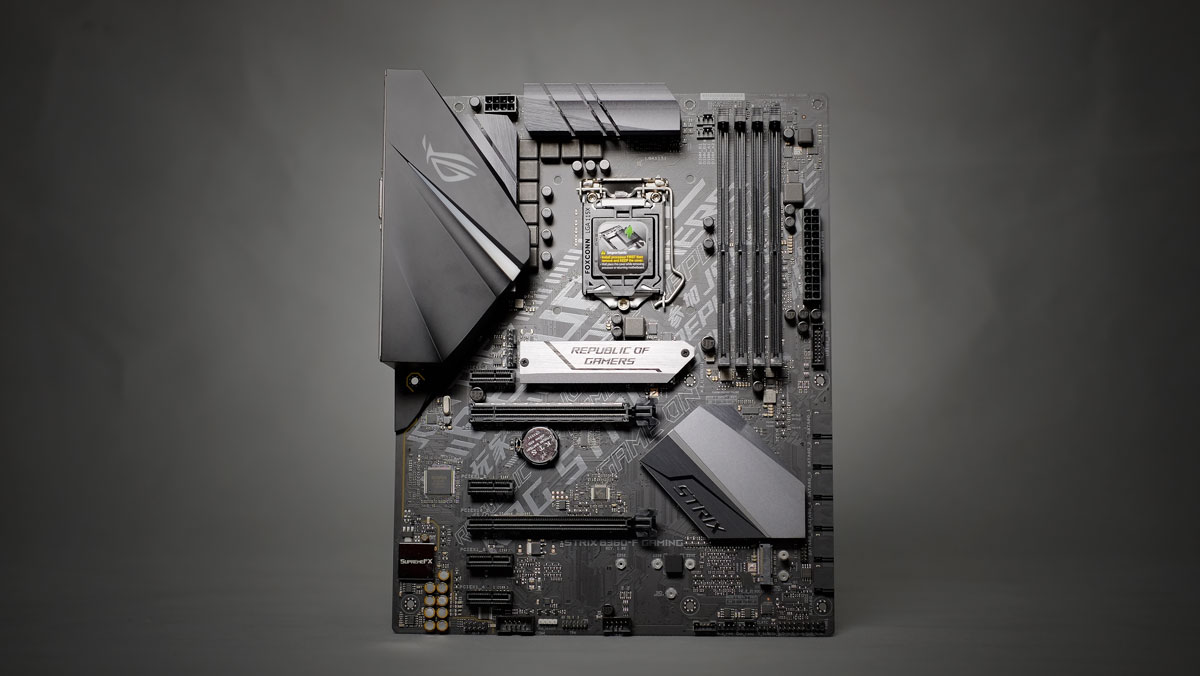Updating your BIOS can bring some benefits, such as new security features and hardware compatibility. However, it can also pose some risks, such as causing system instability or malfunction.
For example, Asus has released some problematic BIOS updates for the Ryzen 7000 processors, which affected their voltage regulation. Therefore, you should only update your BIOS if it is necessary and you are aware of the potential consequences.
Asus provides two convenient tools to help you update your motherboard’s BIOS: EZ Flash 3 and AI Suite 3. EZ Flash 3 allows you to update BIOS from within the BIOS menu, while AI Suite 3 allows you to update BIOS from within Windows.
Before you use either of these tools, you should check your current Asus BIOS version and compare it with the latest version available on the Asus support site. If your BIOS is already up to date, there is no need to update it again and waste your time. You can easily check your Asus BIOS version by following these steps.
Methods to Update
There are four main methods to update ASUS BIOS:
EZ Flash: This method allows you to update BIOS from within the BIOS menu using a USB flash drive or the internet. It is recommended for most users as it is simple and safe.
EZ Update: This method allows you to update BIOS from within Windows using a utility program. It is convenient for users who do not want to enter the BIOS menu or use a USB flash drive.
USB BIOS FlashBack: This method allows you to update BIOS without powering on the system or installing a CPU. It is useful for users who have a new CPU that is not compatible with the current BIOS version.
Using AI Suite 3: AI Suite 3 is a utility program that allows you to monitor the system status and access various ASUS software features. One of the features is EZ Update, which can help you update the BIOS from within Windows.
How to Backup Your Data Before Updating ASUS BIOS
Before you update your ASUS BIOS, it is important to backup your data to avoid losing it in case of any unforeseen issues or errors during the update process. You have various options to backup your data based on your needs and preferences.
Some of the common ways to backup your data before updating ASUS BIOS are:
- Cloud service: You can use a cloud service like OneDrive, Google Drive, Dropbox, etc. to store your important files and folders online. This way, you can access them from any device and recover them if necessary. You can also use the cloud service app to sync your files across multiple devices.
- External storage device: You can use an external storage device like a USB flash drive, an external hard drive, a memory card, etc. to transfer or copy your important files and folders to the device. This way, you can keep them secure and offline. You can also use a backup software to automate the backup process and set it up regularly.
- System image: You can use a system image to make a full copy of your entire system, including the operating system, settings, programs and files. This way, you can restore your system to the exact state it was in before the BIOS update if something goes wrong. You can use the Windows built-in tool or a third-party software to make and restore a system image.
Method 1: EZ Flash
To use this method, you need to prepare a USB flash drive with the latest BIOS file downloaded from the ASUS support site. You can also use the internet option if your motherboard supports it.
Here are the steps to update ASUS BIOS using EZ Flash:
- Insert the USB flash drive into a USB port of your computer.
- Restart your computer and press <F2> or <Del> to enter the BIOS menu.
- Select [Advanced] > [ASUS EZ Flash 3 Utility] and press <Enter>.
- Select [via Storage Device] or [via Internet] depending on your preference.
- If you select [via Storage Device], browse to the USB flash drive and select the BIOS file. If you select [via Internet], connect to a network and select the server location.
- Confirm the BIOS file and press <Enter> to start updating.
- Wait for the process to complete and do not turn off or restart your computer during this time.
- After the update is done, press <F10> to save changes and exit.
Method 2: EZ Update
To use this method, you need to install the EZ Update utility program from MyASUS or the ASUS support site. You also need to have a stable internet connection.
Here are the steps to update ASUS BIOS using EZ Update:
- Type and search [MyASUS] in the Windows search bar and click [Open].
- Select [Customer Support] > [Live Update] > [Latest].
- Search for [BIOS Update for Windows or BIOS Installer for Windows] in the BIOS Update (Windows) category and click [Download].
- After downloading the file, double-click it to start updating BIOS.
- Follow the on-screen instructions and do not turn off or restart your computer during this time.
- After the update is done, your computer will reboot automatically.
Method 3: USB BIOS FlashBack
To use this method, you need to have a motherboard that supports USB BIOS FlashBack feature and a USB flash drive with the latest BIOS file renamed according to your motherboard model.
Here are the steps to update ASUS BIOS using USB BIOS FlashBack:
- Download the latest BIOS file from the ASUS support site and rename it according to your motherboard model. For example, if your motherboard model is ROG STRIX Z590-E GAMING WIFI, rename the file as Z590EGW.CAP.
- Format your USB flash drive as FAT32 and copy the renamed BIOS file into it.
- Turn off your computer and unplug the power cord.
- Insert the USB flash drive into the designated USB port for USB BIOS FlashBack. You can check your motherboard manual for the location of this port.
- Press and hold the USB BIOS FlashBack button for 3 seconds until the LED starts blinking.
- Wait for the LED to stop blinking and turn off, indicating that the update is done.
- Plug in the power cord and turn on your computer.
Method 4: Using AI Suite 3
AI Suite 3 is a utility program that allows you to monitor the system status and access various ASUS software features. One of the features is EZ Update, which can help you update the BIOS from within Windows.
To use this method, you need to install AI Suite 3 and download the latest BIOS file for your motherboard model from the ASUS support site. You also need to have a stable internet connection.
Here are the steps to update ASUS BIOS using AI Suite 3:
- Launch AI Suite 3 via the Windows start menu.
- Click the main menu icon of AI Suite 3 and choose EZ Update.
- Click Check Now > Connect to automatically check for available updates including drivers, BIOS, and software updates.
- If there is a new BIOS version available, click Update to start downloading it.
- After the download is complete, click Flash to start updating BIOS.
- Follow the on-screen instructions and do not turn off or restart your computer during this time.
- After the update is done, your computer will reboot automatically.
Conclusion
Updating ASUS BIOS can be done easily using one of these 4 methods: EZ Flash, EZ Update or USB BIOS FlashBack. However, you should always backup your data and follow the instructions carefully to avoid any problems.
Concluding the process, updating the BIOS on your Asus motherboard is a straightforward task using the methods outlined above. It is essential to exercise precision and attentiveness in following each step meticulously, while also ensuring the presence of a reliable uninterruptible power supply (UPS) system during the update process. Subsequently, it is advisable to verify the BIOS version to confirm the successful completion of the update. Wishing you a seamless and successful updating experience.

